What strategies, skills, and frameworks are shaping the next generation of stakeholder and community engagement? This question has been on everyone’s lips since the Covid 19 situation has propelled us into another system of engagement.
I would just begin with Borealis’ unique perspective on where engagement is headed. After all, we’ve spent the last 20 years helping organizations build enduring and trusted relationships with stakeholders. During this time, we’ve seen the world become increasingly connected and relationships, increasingly complex. Here’s our take.

Next-gen strategies
As the social influence of stakeholders continues to grow, taking a strategic approach to stakeholder engagement becomes increasingly important. Stakeholder and community engagement leaders need to always know where the organization currently stands and where it wants to go – and then find the most efficient route to get there. Sometimes amid conflicting internal interests. Only a well thought-out strategy that clearly supports overall business objectives will produce the desired outcomes. Companies also needs to evaluate carefully online engagements stategies, which we have been pushed to, as it may appear tempting, but still contains some pitfalls

Next-gen skills
- Compassion and empathy. At its most fundamental level, stakeholder and community engagement is all about taking other people’s needs and concerns into consideration, and then trying to find a solution that works for everyone. Even as face-to-face discussions make room for online exchanges, these skills continue to be the backbone of good stakeholder and community relations.
- Ability to prioritize. Organizations have already seen stakeholder numbers balloon with increased regulation, growing social expectations and online communication platforms. But not all stakeholders have the same level of interest in – or influence over – a project’s successful delivery. Stakeholders need to be prioritized so that efforts are directed where they matter most.
- Willingness to improve. Change is always uncomfortable, even when you know you’ll be better for it in the end. Organizations that embrace change – such as adopting technology to improve processes– report significant gains. While technology cannot replace things like compassion and empathy, it’s a powerful enabler because it allows you to do much more in less time.
Read about the insightful discussions that took place at the stakeholder & Community Engagement summit in 2019.

Next-gen framework
Effectively engaging with stakeholders so that issues and grievances are resolved in a timely manner is no longer enough. Next-generation stakeholder and community engagement teams are expected to support real-time decision-making by relaying the right information to the right people within the organization. This requires a solid framework to standardize stakeholder engagement processes
Among other things, a good stakeholder engagement framework will allow you to:
- Use technology to your full advantage
Having a centralized tool for managing stakeholder engagement means that team members can access, analyze and report on data such as stakeholder information, industry requirements, engagement efforts, community commitments and regulatory compliance – all from a single location, regardless of where they may be located on the globe. This creates a powerful institutional memory that supports a culture of continuous improvement.
- Analyze stakeholders and communities more efficiently
Stakeholder mapping tells you who your relevant stakeholders are, what their perspectives and interests are, how they relate to one another and to your organization, and what degree of influence they wield. It’s also an essential step in building an effective stakeholder engagement plan
- Engage meaningfully on multiple platforms
There are advantages and drawbacks to using social media for stakeholder engagement On one hand, you can quickly obtain lots of information and stakeholders have an easy way to express their concerns, wants and needs. On the other, it’s harder to control the message if you’re flooded with posts from unrelated individuals sharing irrelevant or incorrect information. Engaging with project affected people meaningfully can be tricky online, but it is possible – provided you’re fully aware of the limitations of online engagement
- Remain focused on your social license to operate
All stakeholder efforts should be supporting a single goal:maintaining a social license to operate. This includes your public affairs and government relations, social investment, environmental performance and community engagement.
As social acceptance becomes increasingly important across all industries and regions, organizations are awakening to the fact that stakeholder and community engagement is now a vital business function that must be optimized. This is what next-gen stakeholder and community engagement leaders are starting to realize. Our team can help you make it happen.







